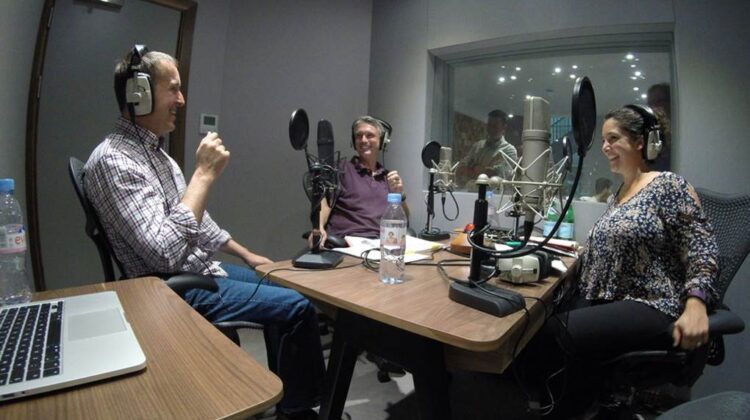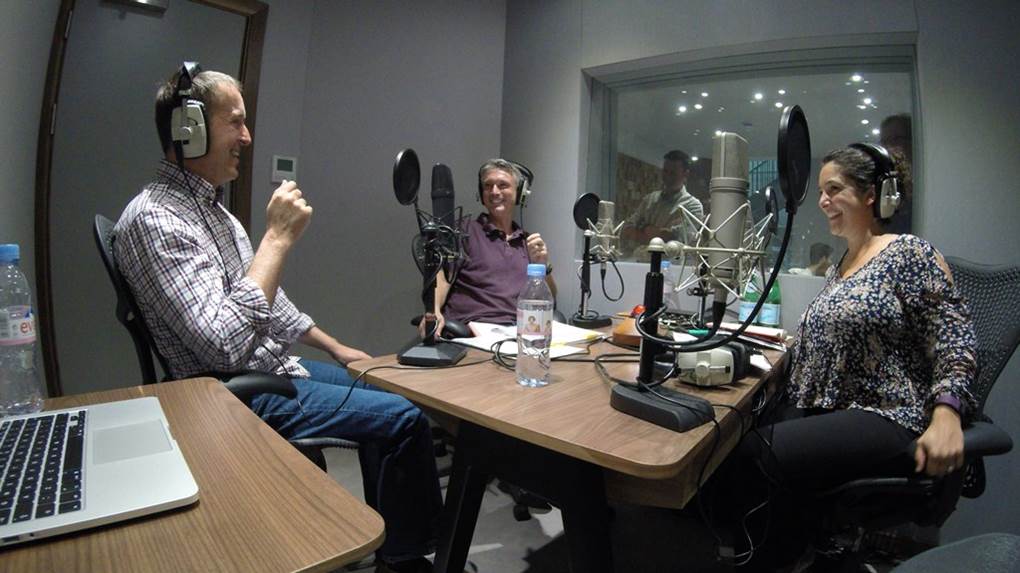
Shane Cryer, Concept Developer Educational Environments at Ecophon UK & Ireland and Russell Richardson, Director at RBA Acoustics and the Institute of Acoustics Council’s Honorary Secretary with Salma Cranfield the presenter.
Episode Two – A Sound Education
That good acoustics in schools and higher education institutions is vital, should not be much of a surprise to Acoustic Bulletin readers. However with constant pressure to save money from construction budgets, and a lack of a depth of understanding among construction professionals, parents and teachers, there is a risk that acoustics may be compromised at the cost of children’s education and ultimately their future in society.
Why sound matters so much in education
In this second episode of A Sound Effect on People, presenter Salma Cranefield is joined by Shane Cryer and Russell Richardson, who discuss why sound matters in education.
Early in the episode Shane and Salma discuss what’s important in the design of a successful classroom, including acoustics, and why acoustics can be forgotten in a visual design process, to the detriment of the classroom experience for children. Over 70% of learning still takes place in the traditional way, by a teacher talking to their students, making a suitable sound environment still vital. With the physical environment so important in success, simple changes can dramatically improve children’s behaviour and ultimately, their attainment.
Research shows that acoustic standards should only be a minimum aim
Within the UK the design guidance leading education acoustics is Building Bulletin 93, all new buildings or refurbishment projects should meet those standards (it’s mandatory in England and Wales). Meeting standards should be the minimum we aim for in a school, and Shane discusses how this was demonstrated by the Essex Study, a useful summary of which is available here. As long term readers will remember this was an independent study by Essex County Council, looking at the effect improved acoustics in refurbished classrooms have on the success of the learning environment.
Acoustic regulations supporting the teacher’s workplace as well as a learning place
In the second part of the episode, Shane and Salma are joined by Russell, to discuss the application of BB93 within the UK construction industry. The classroom is a teacher’s workplace as well as a learning place, and well-designed classrooms can help to reduce teacher stress and health. Both the classroom as a learning and working environment are supported by compliance with Building Bulletin 93, an updated version of which was released in February 2015, having survived the ‘bonfire of the building regulations’.
These minimum standards are a step improvement on previous regulations, and include standards for acoustics for refurbished classrooms, children with special education needs, and introduce post testing. All schools that undergo refurbishment or new build projects need to comply with the BB93 standard. Testing is however not yet mandatory – and this is something that needs to happen to really drive compliance and improvement.
Supporting information:
· A full copy of the BB93 regulations can be found here.
· For a guide to the current education standards mentioned in the podcast, download our whitepaper here.
If you have any questions please continue the discussion on Twitter, where Shane can be reached @shanecryer, and RBA Acoustics are @RBAacoustics.
You are also welcome to contact Shane via me email address here.
As with Episode One, you can probably listen to the podcast through your usual app, or you can find it online at Libsyn, iTunes , Stitcher or TuneIn.
Libsyn link: http://soundeffectonpeople.libsyn.com/episode-2-sound-education


